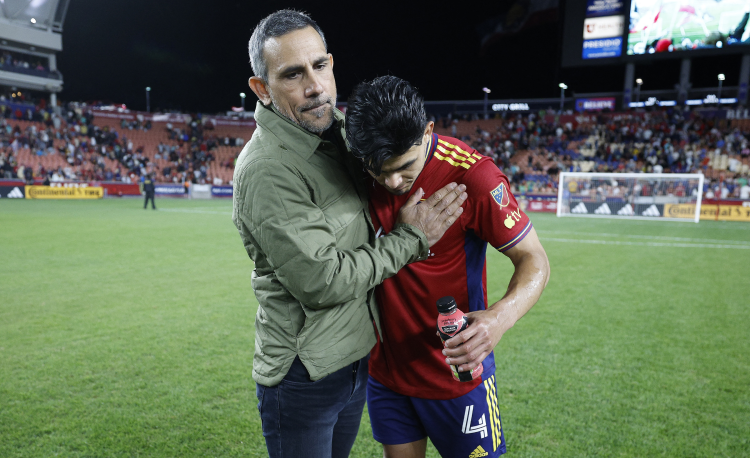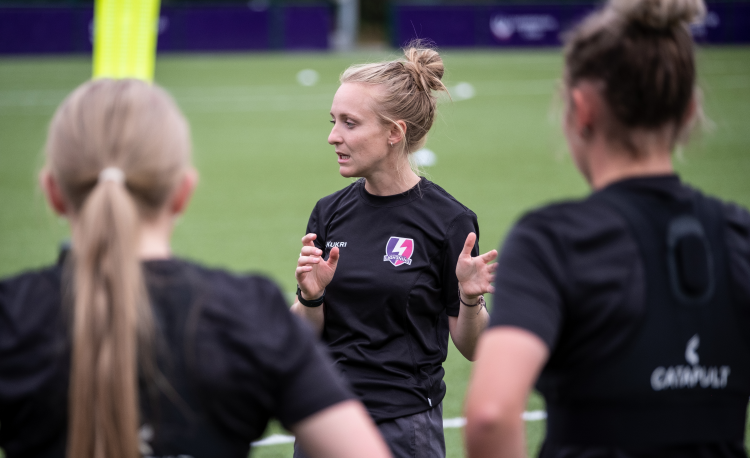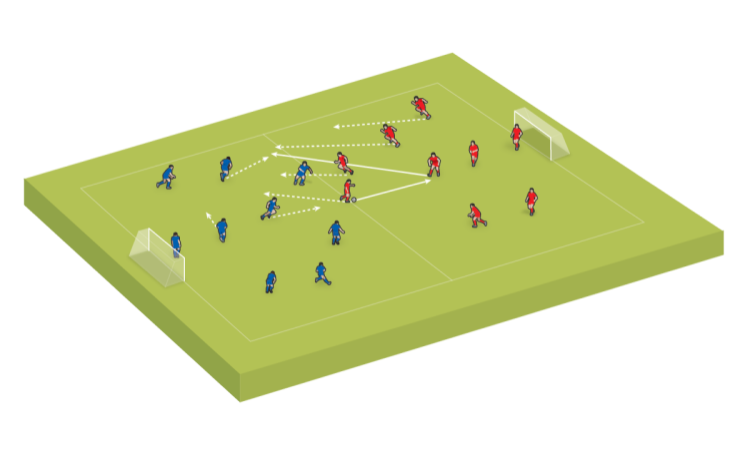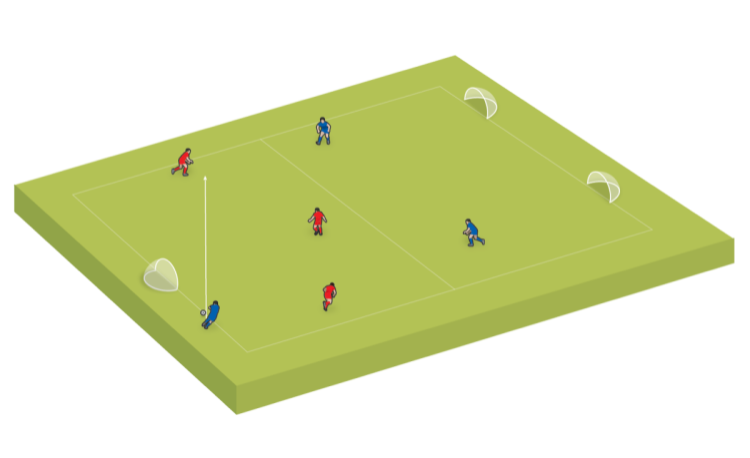Four ways of showing players that you care
Learning how best to look after our athletes will make us better coaches, says Matthew Gherardi, a postgraduate teaching assistant in sport pedagogy.
Ensuring our athletes’ physical and psychological wellbeing is one of a coach’s most important tasks.
In a contact sport like soccer, we have a legal responsibility to protect our athletes from all sorts of physical injuries, but we also have a moral responsibility to show our athletes that we care about, and for, them.
As coaches, we regularly demonstrate this care through small acts, such as an arm around the shoulder, arranging lifts to enable athletes to get to matches and meticulously planning matchday squads to ensure that every player gets equal game time.
As a by-product, our athletes learn to trust us and they recognise that we are committed to them. In turn, this could potentially result in increased effort during training sessions and increased performance in matches.
Importantly, demonstrations of care help sow the seeds for a lifelong love for soccer - something all coaches should strive for.
Here are four tips for showing players you have their best interests at heart...
1. Find time for your players
During training sessions, our focus is often on trying to get across our technical and tactical points. This can leave us blind to those in front of us and make us preoccupied with trying to get our message across.
There often seems to be little time to get to know our athletes beyond their playing position, shirt number or competencies as soccer players.
This, however, is a non-negotiable aspect of our quest to care for our athletes. Just as a doctor cannot adequately care without knowing the patient’s disease, so a coach cannot adequately care for their athlete without knowing them as a person.
Even if time is scarce during sessions, we must find a window. One way to do this is by planning two or three interactions with different squad members each week.
Interact with a range of players - that includes the more inward and reserved players, not just the loud ones.
Demonstrating to athletes that you care about them as people, not just soccer players, will help leave a lasting lifelong impression.
TOP TAKEAWAY: Plan time during a session to learn about your athletes’ interests or beliefs. Make it your quest to find out three facts about three different players during every session.
2. Listen to your players
We must pay attention to our athletes in order to get to know them.
I must admit this is something I previously seldom considered. As a developing sports coach, I was guilty of hearing what my athletes wanted to do during training, but I rarely listened to, or acted upon, these ideas.
I attempted to give the impression that I gave athletes a voice by asking hollow questions such as “Any thoughts?” or “Any opinions?”. On reflection, I asked these questions with my answers already formulated.
However, genuinely listening to our athletes demonstrates that we value what they say. Although we might not always agree, ensuring that we hear the voice of our athletes, particularly those who are very young, is important.
TOP TAKEAWAY: Listening to our athletes and acting on what they say help demonstrate that we value our players’ opinions and care about them.
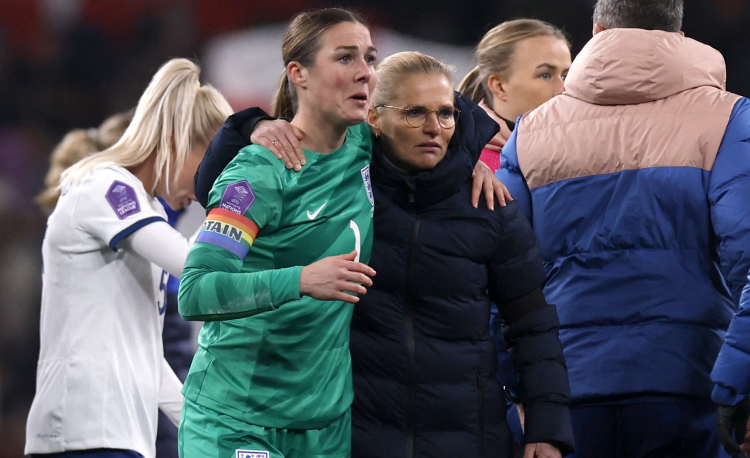
3. Care for the self
Coaching can be a physically and mentally demanding endeavour.
It can also be emotionally draining. We feel such a connection to our athletes that, when they come to us with problems, we experience their pain or hardship, too.
We remain compelled - out of our love for, and commitment to, our players - to respond to their woes without hesitation because we care deeply about soccer and want to ensure that everyone on the team can participate in the sport they love.
But such attempts to care, while well-meaning, can push our own wellbeing as coaches to the brink.
We must be aware of our limitations and of when we might not be best-placed to care for our athletes - these are major challenges we face.
If we cannot care for ourselves, then we cannot physically look after our athletes. So, get into the habit of setting boundaries on what you can and cannot do and spend time reflecting on your own wellbeing.
Recognising our own need for care will also help us better recognise our athletes’ requirements.
TOP TAKEAWAY: Through self-reflection on our wellbeing, we can recognise our limitations as coaches and set boundaries on what we can and cannot do.
4. Care with each other
Care should not fall singularly on the shoulders of the coach. After all, when squads exceed 20 players, it would be unrealistic for the coach to meet every demand for care.
Instead, each club or team must aim to cultivate an environment where all those involved look out for one another. This can include parents, assistant coaches and, most importantly, team members.
A meeting could be held at the start of the season in which you foreground soccer as a team sport on and off the field, and one in which everyone is responsible for caring and looking out for each other.
All these support networks act as a failsafe mechanism to ensure our athletes receive the appropriate care when the coach is unavailable.
TOP TAKEAWAY: Develop an environment in which care is the responsibility for all those involved in the sport – not just the coach.
For further reading, Matt recommends Care in Sport Coaching, edited by Colum Cronin and Kathleen Armour
Follow Matt on X: @gherardi23
Related Files
Newsletter Sign Up
Coaches Testimonials

Gerald Kearney, Downtown Las Vegas Soccer Club

Paul Butler, Florida, USA

Rick Shields, Springboro, USA

Tony Green, Pierrefonds Titans, Quebec, Canada
Subscribe Today
Discover the simple way to become a more effective, more successful soccer coach
In a recent survey 89% of subscribers said Soccer Coach Weekly makes them more confident, 91% said Soccer Coach Weekly makes them a more effective coach and 93% said Soccer Coach Weekly makes them more inspired.
*includes 3 coaching manuals
Get Weekly Inspiration
All the latest techniques and approaches
Soccer Coach Weekly offers proven and easy to use soccer drills, coaching sessions, practice plans, small-sided games, warm-ups, training tips and advice.
We've been at the cutting edge of soccer coaching since we launched in 2007, creating resources for the grassroots youth coach, following best practice from around the world and insights from the professional game.
